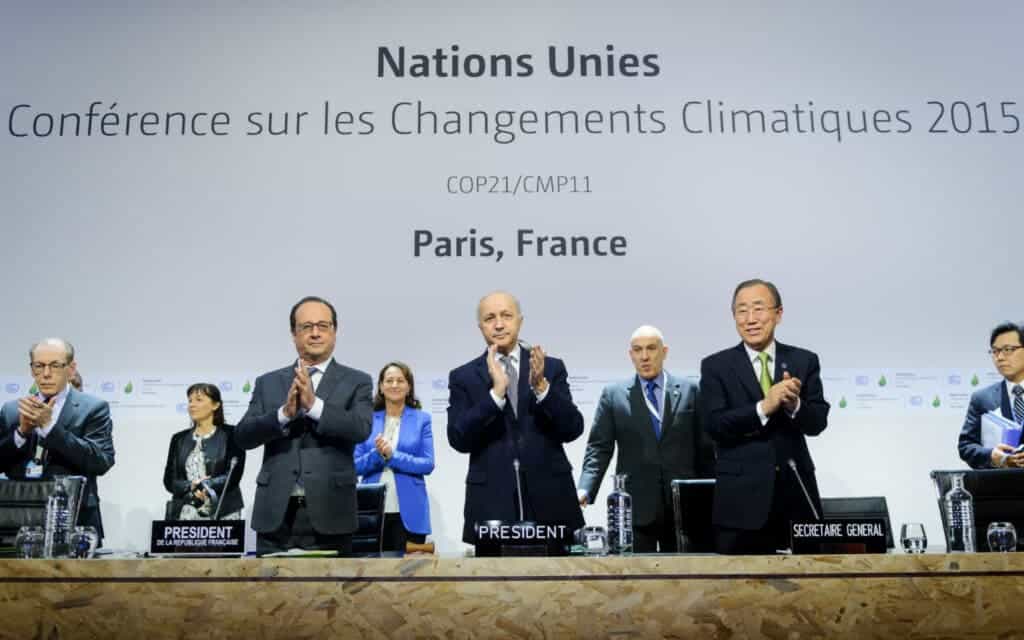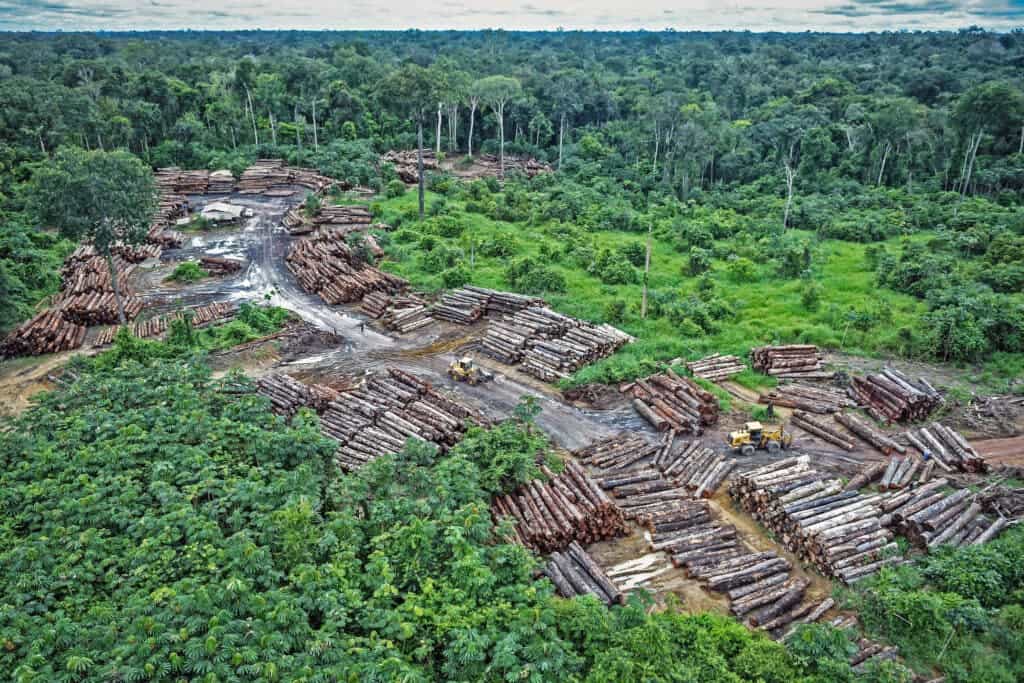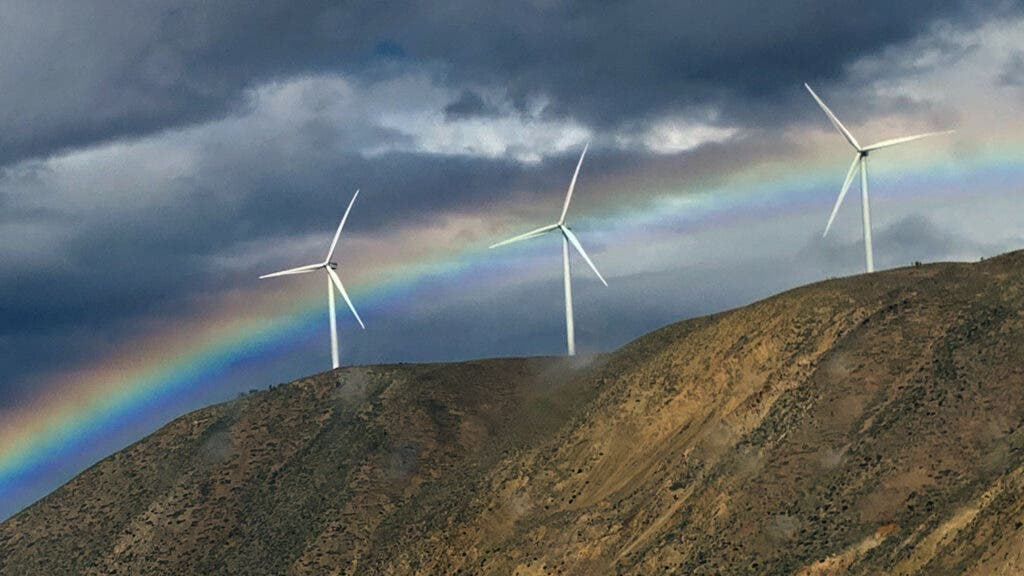Five years ago, the world’s countries agreed on the most ambitious global climate agreement the world has ever seen, the Paris Agreement — an international cooperation to get everybody on board to tackle this monumental challenge.
Has it been enough? Not really, with greenhouse gas emissions and the global temperature still going up and decisive action still being delayed.

From the beginning, it looked ambitious, but shakey. A group of 196 countries (virtually all the countries on the globe) adopted the agreement in 2015 at the COP21 United Nations climate change conference. It is the first-ever universal, kind of binding global climate deal, which sets out a global action plan to put the world on track for avoiding the worst effects of global warming. But it also has no proper enforcing mechanism, essentially relying on national pledges.
Countries agreed under the Paris Agreement to keep the increase in global average temperature to well below 2°C above pre-industrial levels, while also aiming at 1.5º if possible — a half degree which would make a huge difference for the environment. This means global emissions will have to reach a peak as soon as possible, transforming the global economy overall.
Under the agreement, every country has submitted an individual plan (called “Nationally Determined Contributions”, or NDC) to tackle its greenhouse gas emissions. The tricky part is that the agreement gave each country the flexibility to tailor its climate action plan to its own unique circumstances. For instance, you want to encourage a coal rich country to reduce its consumption and switch to renewables, while for a forest-rich country, you’d want more emphasis on fighting deforestation. Every NDC is custom-made for every individual country, considering its unique situation, resources, and possibilities.
But the Paris Agreement is not exactly legally binding. It is a hybrid between some legally binding provisions and (most) other provisions that are only politically encouraged. There are no clear consequences or penalties for countries that fall short of their pledged goals, just international pressure, which is as abstract as it sounds.
Still, their regular progress is tracked and while abstract, this pressure is not entirely without power and some countries in the Paris Agreement are trying to hold each other responsible. Todd Stern, the climate envoy to President Barack Obama, recalls regarding the Paris Agreement:
“My team and I had been working toward this for seven years … and the story of climate negotiations had so often been one of disappointment. And yet here we were and we knew that we had – all together – done a really big thing. A very special moment. An unforgettable one,” he told The Guardian.
Where are we at now?
We are still falling short of climate action; very short. Since 2015 global greenhouse gas emissions have continued to grow, with a billion tons of CO2 added to annual figures between 2015 and 2018, according to the Global Carbon Project. This increase is mainly dominated by emerging economies such as China and India, but many developed countries are also falling very short on their proposed action.
In 2019, emissions reached a record high of 52.4 GtCO2e, mainly because of land-use and carbon dioxide greenhouse gasses, according to the recent UN emissions gap report. It’s the third consecutive year the UN reported an increase in emissions, warning over the expansion of fossil fuels and deforestation.
The coronavirus pandemic and the reduction in economic activity will likely lead to a 7% reduction in emissions this year, the UN anticipates. This pace would have to be maintained over the next few years in the absence of a pandemic to meet the Paris Agreement targets, something that seems tricky.
“I’m alarmed by the growing evidence of accelerating climate destruction and injustice,” U.N. Secretary-General Antonio Guterres told The Associated Press in an email. “But I’m also optimistic by the growing coalition to achieve net-zero emissions … This is a tribute to the resilience of the Paris Agreement.”
Countries would have to collectively increase their climate action threefold to be in line with the 2ºC goal of the Paris Agreement, UN estimates. Meanwhile, to be in line with the 1.5ºC target, they would have to do so fivefold. The world is now heading to global warming of about 3ºC based on the current climate pledges — and it’s not even so clear that those pledges are being upheld.

As emissions rise, so does the global temperature. This year temperature would reach a 1.2ºC increase above pre-industrial levels, with a 20% chance of exceeding 1.5°C by 2024. Breaking that limit would bring trigger all sorts of consequences on the planet such as further coral bleaching, heat waves, floods, and sea-level rise.
This year, which has registered record Arctic warming, massive wildfires in Australia, America, and the Amazon, and impressive Atlantic storm, will probably be in the top two or three warmest on record, according to UN estimations. Once 2020 is finished, the 10 hottest years on record will all have been in the last 16 years.
The anniversary of the Paris Agreement was supposed to be a chance to check the level of progress and raise country’s ambition. But the pandemic has disrupted meetings and negotiations on climate change. The COP26 climate summit, which was supposed to take place this year, was pushed to November 2021.
“Hypothetical targets are being set and big speeches are being given, yet when it comes to the immediate action we need, we are still in state of complete denial,” Swedish climate activist Greta Thunberg said in an Instagram video to her more than 10 million followers. “We are still speeding in the wrong direction.”
Is there some reason for optimism?
The climate clock might be ticking but we can still avoid its worst consequences, and some countries seem to have understood that. Net-zero emissions is becoming a buzzword, as many leaders start making pledges to reach carbon neutrality in 20 or 30 years. This means transforming their economies into clean ones.
Climate experts are wondering how this will actually happen, beyond the headline of the actual commitment. Still, the fact that more and more countries claim to do so is a positive signal. So far, China, Japan, South Korea, the European Union (EU), and the United Kingdom have committed to zero carbon and more are expected to join the pack. Progress is slow, but there is some progress nonetheless.
The Paris Agreement has also proven resilient in some sense. US President Donald Trump announced at the start of his term that the country would leave the climate treaty, something that finally happened last month. Many feared the US decision would lead to an exodus of like-minded countries but this never happened, leaving the US alone and an outlier rather than a trendsetter. Furthermore, president-elect Joe Biden has vowed to rejoin the pact as soon as possible.
Even Jair Bolsonaro, Brazil’s president, who repeatedly said in his presidential campaign that the country would leave the agreement, was finally pressured to stay on. Still, he did a mess on a national scale with his (lack-of) environmental policies, encouraging deforestation through more cattle ranching and soy crops.
Niklas Hohne of NewClimate Institute, one of the partner organisations behind Climate Action Tracker, told The Guardian: “Five years on, it’s clear the Paris agreement is driving climate action. Now we’re seeing a wave of countries signing up [to net zero emissions]. Can anyone really afford to miss catching this wave?”
It’s true that fossil fuels, one of the main sources of emissions around the globe, are still alive and kicking and that we need more countries phasing them out. But renewables are becoming cheaper every day and are being embraced as a competitive option, with massive solar and wind farms opening up regularly.
Back in 2015, when the Paris Agreement was signed, former UN climate chief Yvo de Boer said coal plants were still the “logical choice” for developing countries. This has drastically changed, with the International Energy Agency, a conservative body, describing solar and wind power this year as stronger than fossil fuels — up to 90% of the new energy installed this year is renewable.

But that’s not all there is. Institutions such as financial regulators and city authorities are using the Paris Agreement goals in their own policies. More than 400 public development banks pledged to align their activities with the climate deal, with a group of Asian banks that haven’t done so yet under increasing pressure to follow suit. Cities and major investment groups are also increasingly divesting from fossil fuels.
Cities have become massive climate actors. A recent report by the C40 cities network showed that 54 of the world’s leading cities are in line with the 1.5ºC goal of the Paris Agreement. They are rolling out plans to cut their greenhouse gas emissions, from cleaner public transport networks to mass-tree planting.
Who is doing what?
The Paris Agreement came into effect on November 4, 2016 — 30 days after at least 55 countries representing at least 55% of the world’s global emissions ratified it on October 5, 2016. Of the 196 negotiating countries that signed it, 185 parties and the EU, representing more than 88% of the global emissions, have ratified it.
The EU represents about a fifth of the world’s economy and last year accounted for about 9% of the global emissions, making it the third-largest emitter. Europe’s leaders see dealing with climate change as a way of highlighting the relevance of the EU.
The bloc has mostly lived up to its efforts, despite large variations between individual countries. In 2007, the bloc had a goal of cutting emissions by 20% by 2020. By 2018, they had reduced emissions by 23.2%, meeting their goal in advance. Now it has a 40% target for 2030, which experts still don’t see as enough, and hopes to be carbon neutral by 2050. Nevertheless, taken as a whole, the EU is one of the better performing areas on the globe.
Under the Paris Agreement, the U.S. promised to reduce its emissions by about 25% by 2025 compared with 2005 levels. However, the country is only on track to achieve about a 17% reduction. The silver lining is that this reduction is happening despite the country’s federal administration — not thanks to it. President Trump’s policies have accelerated climate change rather than slowing it down, and all this reduction comes from the private sector and state or local governance. Under an administration more interested in the climate, the US could easily accelerate its sustainable transition.
China is also a big player and a very important one to deal with climate change, as it’s the world’s larger emitter. It overtook the US and now accounts for 28% of the global CO2 output. The country is one of the most recent reasons for optimism, as President Xi Jinping said China would achieve carbon neutrality by 2060.
Instead of having emission reduction goals, China has carbon intensity goals, which means reducing the level of C02 used per unit of economic activity. It had first pledged to cut its carbon intensity by 40-45% and it met that goal at the end of 2017. Now, in latest its NDC, it promised to cut carbon intensity by 60-65% and peak emissions by 2030. Research shows it’s on track to meet those goals, but whether they are ambitious enough is a different question.
Australia is also a relevant player. It’s one of the biggest sources of fossil fuels and the world’s largest exporter of coal and gas. Emissions of Australian exports account for 3.6% of the global emissions. Looking at per capita, Australians are responsible for four times the emissions of people living in the US.
The country hasn’t really lived up to its promises. It had a 2030 target to cut emissions by 26-28% but projections published at the end of last year suggested emissions will only be 16% lower in 2030. The country has moved away from most nations in the UN over the years, which have urged fast rapid emissions reductions.
Let’s also review the actions of the UK, which will host the next UN climate summit in 2021. The country has done mostly well on its promises, meeting the five-year greenhouse gas targets set in 2008. Right now, Britain’s total output of warming gases has gone down by around 45% from 1990 levels.
Now, as it exits the EU due to Brexit, the UK has just presented its new climate plan, which was described as ambitious but challenging. According to it, 87% of its electricity would have to come from low carbon sources by the end of the decade. Plus, almost half of the cards would have to be electric, compared to the current 6%.
What’s next?
As the world hopefully leaves behind the coronavirus pandemic, the expectation is high for climate ambition to scale up. This year was supposed to be a big one for climate action but instead, we’ve hit the pause button. Still, as we said before, there are reasons to be optimistic and keep aiming at that 1.5º target.
Today, countries will gather at the United Nations Climate Ambition Summit, an online event in which leaders from around the world will present new climate pledges or NDCs. It’s supposed to be an opportunity to use the gap left by the postponement of COP26 to maintain the climate spirit very high.
In 2021, we’ll hopefully more and more countries presenting more ambitious NDCs, in line with the Paris Agreement, and carbon neutrality goal. A world that finally decides to keep fossil fuels in the ground and truly push for renewables. A world that understands the consequences of what would mean not to take climate action.
“We don’t think it’s too late. We’ve seen quite a shift in the last years with mass mobilisations, with much higher awareness in the general public of the urgency and dangers of climate change. We now just have to translate that into the political will that we need,” Lucie Mattera, head of EU politics at E3G, a climate change think tank, told EuroNews.


